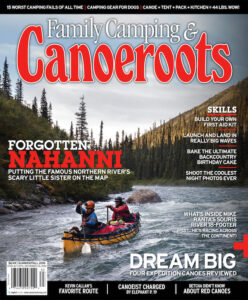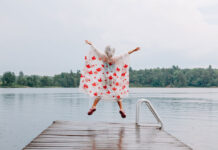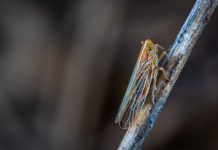- Which came first: Bill Mason or the popularity of red canoes? Hard to say for sure, but the iconic red canoe has since been co-opted to sell everything from heritage clothing (Red Canoe Brand) to upscale cuisine (Red Canoe Bistro).
- During the early 20th century the Chestnut Canoe Company offered their wood-canvas canoes in two stock colors, either red or green. A third color made by mixing green with a porch grey enamel was offered on working class freighters and some other models—the color was called Dead Grass.
- “I am contacted from time to time by canoeing enthusiasts around the world wanting to know the exact color that Bill Mason’s canoe was painted,” reports Canadian Canoe Museum curator, Jeremy Ward. Bill Mason’s daughter, Becky, recently donated a half-can of red paint found in the Mason canoe shed. “It has a Chestnut brand on the label, matching exactly the color of Bill’s famous red Prospector displayed at the CCM, in case there are still any keeners wanting a color match.”{loadposition MidContent}
- Men in red are more desirable to women, according to a study published in the Journal of Experimental Psychology. When asked to rate pictures of men wearing a variety of colors, women rated men in red “higher in status and more likely to earn a better living.” That perception led to higher reported rates of attraction, according to the researchers. We can only assume this hypothesis holds true for men in red canoes. The study said nothing of beards.
- The largest red canoe in the world is found in Toronto, Ontario’s Canoe Landing Park near Lake Ontario. Designed by artist Douglas Coupland, the 30-foot-long canoe is an homage to artist Tom Thomson. Local news source BlogTO rates its cozy interior one of the best make-out spots in the city.
- Red canoes go faster. No, really—this campfire joke might actually hold water. A 2005 study by British scientists found that “wearing red is consistently associated with a higher probability of winning” over blue-clad competitors, according to the journal Nature. A few hypotheses: referees favor red players, crimson teams perform better or red makes opponents cower. Whatever the reason, it’s enough to make us buy red.

Subscribe to Paddling Magazine and get 25 years of digital magazine archives including our legacy titles: Rapid, Adventure Kayak and Canoeroots.







